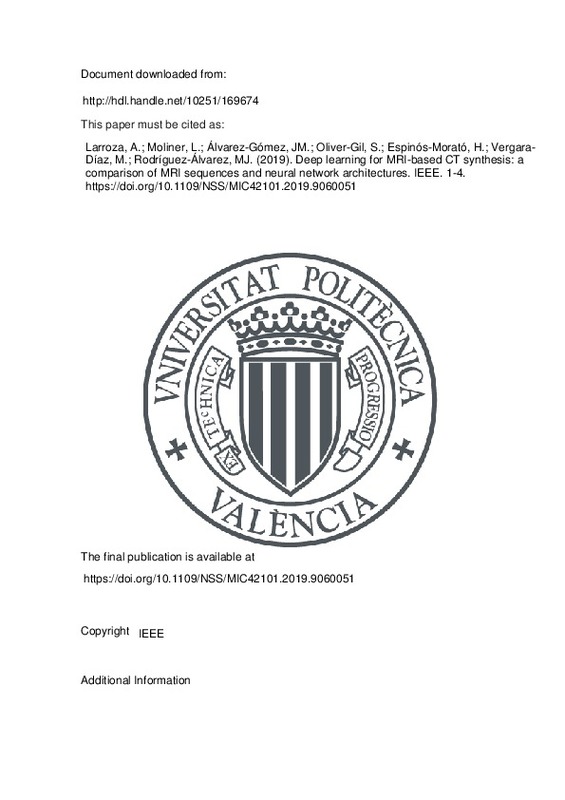JavaScript is disabled for your browser. Some features of this site may not work without it.
Buscar en RiuNet
Listar
Mi cuenta
Estadísticas
Ayuda RiuNet
Admin. UPV
Deep learning for MRI-based CT synthesis: a comparison of MRI sequences and neural network architectures
Mostrar el registro completo del ítem
Larroza, A.; Moliner, L.; Álvarez-Gómez, JM.; Oliver-Gil, S.; Espinós-Morató, H.; Vergara-Díaz, M.; Rodríguez-Álvarez, MJ. (2019). Deep learning for MRI-based CT synthesis: a comparison of MRI sequences and neural network architectures. IEEE. 1-4. https://doi.org/10.1109/NSS/MIC42101.2019.9060051
Por favor, use este identificador para citar o enlazar este ítem: http://hdl.handle.net/10251/169674
Ficheros en el ítem
Metadatos del ítem
| Título: | Deep learning for MRI-based CT synthesis: a comparison of MRI sequences and neural network architectures | |
| Autor: | Álvarez-Gómez, Juan Manuel Vergara-Díaz, Marina | |
| Entidad UPV: |
|
|
| Fecha difusión: |
|
|
| Resumen: |
[EN] Synthetic computed tomography (CT) images
derived from magnetic resonance images (MRI) are of interest
for radiotherapy planning and positron emission tomography
(PET) attenuation correction. In recent years, deep ...[+]
|
|
| Derechos de uso: | Reserva de todos los derechos | |
| ISBN: |
|
|
| Fuente: |
|
|
| DOI: |
|
|
| Editorial: |
|
|
| Versión del editor: | https://doi.org/10.1109/NSS/MIC42101.2019.9060051 | |
| Título del congreso: |
|
|
| Lugar del congreso: |
|
|
| Fecha congreso: |
|
|
| Código del Proyecto: |
|
|
| Agradecimientos: |
|
|
| Tipo: |
|







![[Cerrado]](/themes/UPV/images/candado.png)


